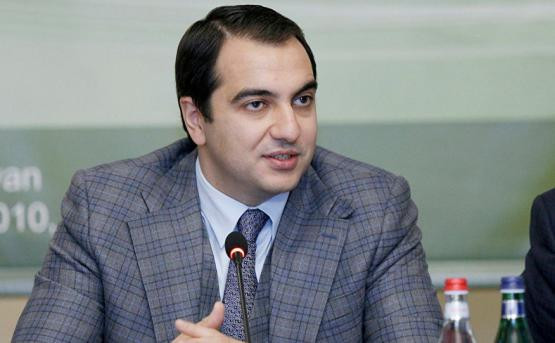
Hayk Harutyunyan's interview to Golos Armenii newspaper
25 Jan 2019
AEA foundation Founder and Chairman of the Board Hayk Harutyunyan: we have the result of the lowest solar tariff for Armenia in EU.
Full translation of the intervew of the Golos Armenii newsletter with Hayk Harutyunyan, Chairman of the Board of the Armenian Energy Agency foundation.
I met Hayk Harutyunyan, the former deputy minister of the Energy Infrastructures and Natural Resources of Armenia (son-in-law of the former prime minister, Karen Karapetyan) and fan of RF solar energy development, in Moscow during the 13th Annual International Conference on Eurasian Economic Integration held by the Eurasian Development Bank (EADB) on November 22, 2018. Mr. Harutyunyan, who recently left the governmental post and founded the Armenian Energy Agency, spoke during one of the segment on Renewable Energy sources which is in scope of interest and great importance to all EAEU member states. Before the conference, he agreed to an exclusive interview with the VoA reporter.
- Mr. Harutyunyan, having left the post of deputy minister of Energy Infrastructures and Natural Resources, you continue working in your beloved field - the development of Solar Energy and other Renewable Energy (RE) sources founding the Armenian Energy Agency. What will you be discussing during the session?
- Yes, I continue working for what I believe in. During the session I will talk about how we did it, how Armenia achieved the lowest solar power tariff not only in the EAEU, but also in Europe and maybe even in the world. The tariff engages foreign investment to the country and is also beneficial for the Government. If the current Government continues the practice of international auctioning, I am sure, that in the next auction we will get an even lower tariff than now (4 cents per 1 kWh).
- What do you attribute it to - the 307 sunny days in a year?
- Yes,the natural conditions are the most important aspect. However, the territory of Armenia is not homogenous in insolation: there are places - for example, in Tavush - where the yield of 1 kWh solar power is similar to that of Moscow. So, not all places in Armenia are fit for solar energy production. But we do have an abundance of suitable spots; in particular, these are mountainous regions surrounding the Lake Sevan where it is possible to install capacities of thousands of MWs. Besides, the country has an effective legislative-regulatory field; the Government offers solar energy purchase guarantees up to 20 years; there are also financial products available specifically for this sphere. Market principles serve as basis of these possibilities and rules apply to all the players, which allows for minimum room for corrupt deals and loopholes, which in turn increases the market’s reliability for international investors.
And these are not just our estimates. So, the International Energy Charter gives yearly assessments of the energy sector investment climates, and Armenia ranks rather high on this rating. And all these factors constitute the fact that we can attract investment even with such low tariffs. In principle, any country can bring investment to Solar Power sector offering, for example, a 10-cent-per-kWh tariff, but we are interested in institutional investors - sustainable, professional, who will expect minimum payoff for low risk.
- During the discussion you will mainly talk about solar energy or will you also consider other RE winds, water, geothermal energy?
- The time is limited, so I will mainly discuss our achievements in solar energy considering that the steps of development in other RES are the same everywhere. For example, we have practically depleted our possibilities with Small Hydro-Power Plants (SHPP), but we still have undiscovered potential within efficiency-raising. And we actively work on this issue in the Agency as well, cooperating closely with all SHPPs, preparing investment projects to attract investors into the field of SHPP energy efficiency.
- Are there any predictive indicators for the development of solar energy and other RES energy sources that can be reached within a certain period of time? period?
- Look, 40 MW installed capacity produces 1% of internal energy consumption. In this year’s end we will already have 20MW. It is important to note, that in 2017 the sector growth was 700%, this year it will be 350% and next year 1.5% of total energy generation will be from solar PV. As of 2023 we forecast that solar energy will constitute about 20% (or 1000 MW) of total production; almost half, more precisely, 40% of these installed capacities will be produced on rooftops, in households, and 60% by autonomous producers. I repeat, this is not an official estimate; the official assessment was to be published in April, 2018, but the Government changed and they are modifying the forecasts.
- It seems, you do not approve much of the expansion and construction of new thermal power plants in Armenia?
- Look, the tariff of Hrazdan TPP (1-4 units) is about 40 AMD per kWh, that of the 5th unit is 32 AMD, and our Masrik power plant in Gegharkunik will have a tariff of 20 AMD. Thus, solar energy is already twice less expensive than thermal. Make your own conclusions. This is why the private sector takes more and more interest in solar stations.
Moscow City





